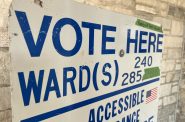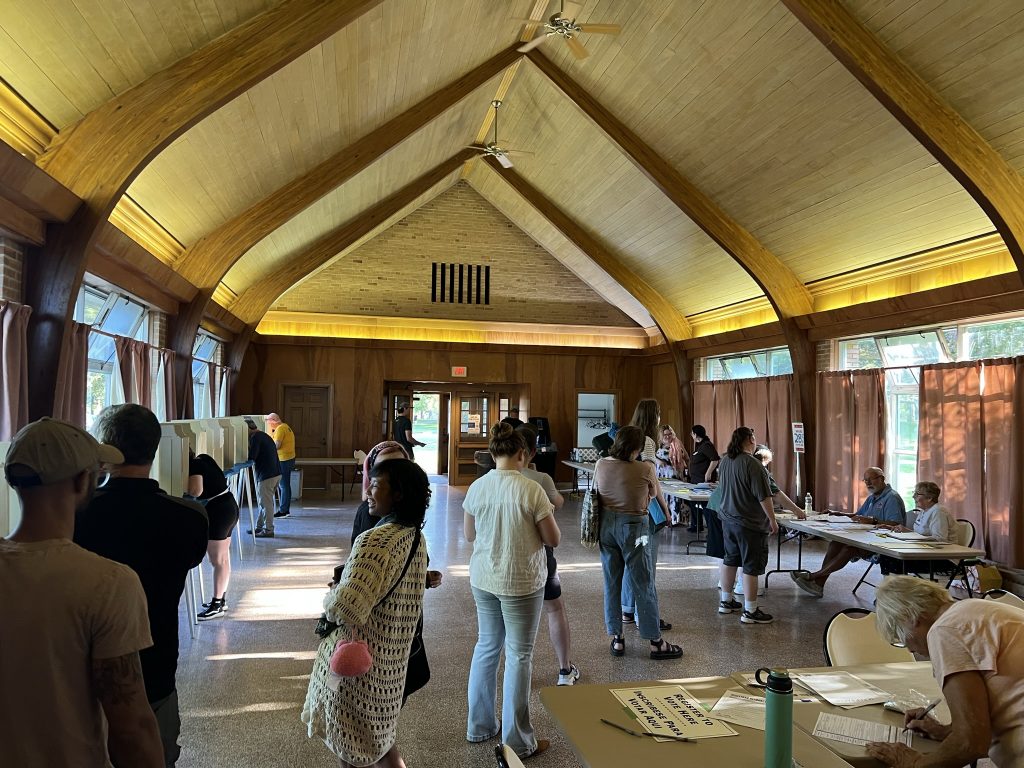Wisconsin Voters Again Color State Purple
The state continues to flip back and forth between two parties, two ideologies.
Republican presidential candidate Donald Trump got 1.69 million votes in Wisconsin on Nov. 5. Liberal Democratic U.S. Sen. Tammy Baldwin got 1.67 million votes, the second most. But, two years ago, voters re-elected conservative Republican U.S. Sen. Ron Johnson.
Can Wisconsin get any more purple politically?
If you’re wondering how thousands of Wisconsin voters can choose a Republican for president, then slide down one ballot slot and vote for a Democrat for U.S. senator, just two years after electing a Republican for U.S. senator, then you don’t fully understand the odd dynamics of Wisconsin.
“Tammy’s success is her uncanny ability to engage more rural areas. But she barely won,” said veteran UW-Madison Political Science Professor Donald Downs. “And Johnson won in 2022 partly because he had a beatable opponent. So the two of them are emblematic of the purple phenomenon.”
Baldwin, the first openly gay senator, is one of the U.S Senate’s most liberal members. Johnson, who first ran in 2012 vowing to fight the out-of-control federal deficit, is one of the Senate’s most conservative members.
Trump’s Wisconsin record is also a contrast: He won the state in 2016, becoming the first Republican to do so since Ronald Reagan in 1984. Trump lost in 2020, but avenged that loss with his Nov. 5 beating of Democratic presidential candidate Kamala Harris.
Wisconsin dishes up annual lessons as a textbook example as a political swing state:
Johnson won in November 2022. But Supreme Court Justice Janet Protasiewicz won in April 2023, giving the court its first liberal majority in more than a decade. Then, two weeks ago, Wisconsin voters opted for the conservative choice for President.
The Supreme Court shift was “very dramatic,” Downs said. “We went from progressive/liberal under [former Chief Justice] Shirley Abrahamson to a conservative court, then back to narrowly left.”
Consider some other examples of Wisconsin’s political whiplash.
From 1901 to 1925, Robert (“Fightin’ Bob”) La Follette was Wisconsin’s governor and then a U.S. senator. The progressive governor implemented primary elections and tax reforms. In Washington, he fought to break up monopolies, for government ownership of railroads and electric utilities, to prohibit child labor and for unions. Wisconsin passed the nation’s first workers’ compensation law.
Although elected as a Republican, La Follette ran a third-party candidacy for President in 1924, getting 16% of the national vote
In 1946, only a generation after La Follette’s death, Wisconsin elected conservative Republican Joe McCarthy as a U.S. senator. In the 1950s, he took advantage of Cold War tensions to wage a campaign against what he said were Communists in the federal government, universities and the movie industry.
McCarthy’s tactics led to the term “McCarthyism,” used by public officials and candidates to describe an opponent’s reckless and baseless attack on their character, past or patriotism.
Democrat Bill Proxmire was elected to the Senate in a 1957 special election after McCarthy’s death. Proxmire was the first Democratic senator from Wisconsin in 20 years.
Wisconsin Democrats can also pick wildly varying favorites.
In 1964, for example, segregationist Gov. George Wallace of Alabama got 34% of the vote in Wisconsin’s Democratic presidential primary.
In 2008, just two generations later, Wisconsin Democrats gave Barack Obama, who was elected the nation’s first African-American president months later, 58% of the vote in that year’s presidential primary.
Wisconsin can also lead the nation in reforms and then repeal them.
In 1959 and ‘62, after decades of labor-versus-business fights, Wisconsin enacted the first laws allowing collective bargaining by public employees. The 1959 law followed the election of Democratic Gov. Gaylord Nelson and Democratic majorities in the Legislature.
In 2011, first-term Republican Gov. Scott Walker and the new Republican majority in the Legislature repealed the right of most public employees to collectively bargain, with the only exception being “public safety” employees like police and firefighters. That law, Act 10, also made public employees pay more for health care and pensions.
Mordecai Lee, a UW-Milwaukee professor emeritus and former Democratic legislator, noted that former four-term Republican Gov. Tommy Thompson correctly targeted the one-third of independent voters who decide elections.
“The world of Wisconsin politics has changed in terms of those percentages, but the key message still is in force: There are some discriminating voters who ‘vote the person – not the party’, who sometimes vote split ticket, sometimes skip a line, etc.,” Lee noted. “Just enough that they still control the election results.”
Steven Walters started covering the Capitol in 1988. Contact him at stevenscotwalters@gmail.com
If you think stories like this are important, become a member of Urban Milwaukee and help support real, independent journalism. Plus you get some cool added benefits.
The State of Politics
-
Women Lead Democratic Gains in Legislature
 Nov 11th, 2024 by Steven Walters
Nov 11th, 2024 by Steven Walters
-
Candidates Ignore State’s Looming ‘Senior Tsunami’
 Nov 4th, 2024 by Steven Walters
Nov 4th, 2024 by Steven Walters
-
Wisconsin Voters Could Do Something They Haven’t Done in 29 Years
 Oct 28th, 2024 by Steven Walters
Oct 28th, 2024 by Steven Walters





















